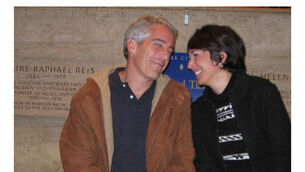10 stealthy steps to make the perfect paper plane
But the new aircraft will not be carrying out raids on Iraq. Its only flights are likely to be across the desks of a school classroom or office.
For the futuristic delta-winged craft is said to be the perfect paper plane and instructions on how to construct it in 10 simple stages were published online yesterday by the Institute of Physics.
As every schoolboy knows, most paper plane designs end in disaster with experimental prototypes stalling, spinning and nose-diving into oblivion.
But the Institute of Physics model will not disappoint. Not only does it glide like a dream, but it generates lift and gains height. It also looks the business.
The instructions on the website Physics Life are as follows: First, fold a sheet of A4 paper lengthways, then fold the two upper corners inwards at a 45 degree angle (steps one and two).
Step three is most important. Fold each side inward again, lining up the two angled edges with the centre line. For step four, fold the nose over and inwards, lining the pointy tip with where the other folds meet in the middle. This provides a proper centre of gravity.
Fold the plane down the middle, and press it flat (step five). Next come the winglets. To make these, fold back three quarters of an inch of paper from the ends of each wing (steps six and seven). They should both be very even with each other.
To make the plane’s “fuselage”, fold each wing down its whole length to form a “ridge” from tail end to nose tip (steps eight and nine). This provides the “handle” with which to hold and launch the plane. Remember not to crease the leading edges of the wings too much.
Finally, unfold the wings and winglets to create the right aerodynamic shape. The wings should have a pronounced “V” shape and the winglets should be at about a 90 degree angle to the wings.
Full instructions can be found on the website www.physics.org.













